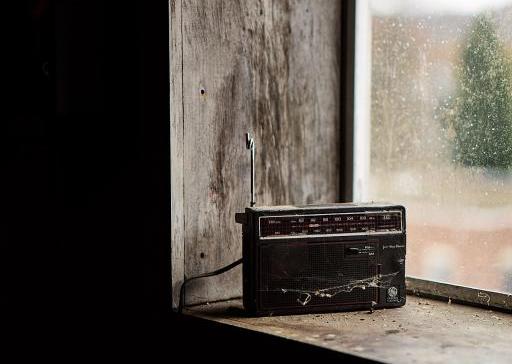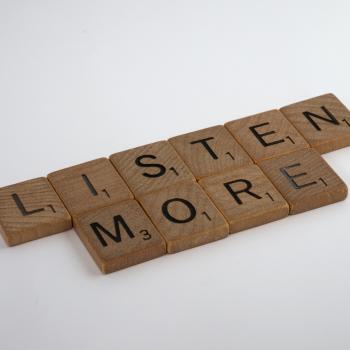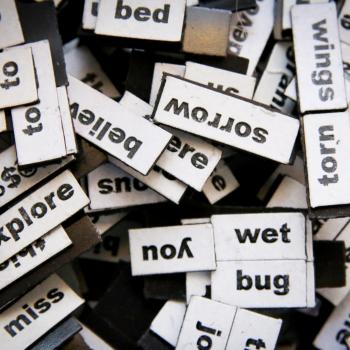
There is something wrong with the way we communicate. I know it. You know it. So why don’t we do anything about it? I mean, it shouldn’t be so hard, should it? If we take a look at these three simple obstacles and face them head on, I’m sure we can all do a lot better.
A Case Study
Earlier today, I was stuck on a New York City subway train for thirty minutes. It can be a disconcerting reality when you realize you are somewhere deep under the East River, packed like sardines with a hundred of your closest potentially-serial-killer city mates. I tried to breath deeply and not let my mind think about these things. It is a lot of water, after all and the guy next to me had some shifty eyes.
Just about the time my claustrophobia erupted, the announcer came on and said, “attention ladies and gentleman.” Oh, thank God. An explanation. A timetable. Hope.
Unfortunately, whatever the conductor said next I will never know. The speaker went scratchy and jumpy. I sat there another fifteen minutes straining my ears toward two more indecipherable announcements before we finally got moving.
The Sender
The first obstacle to communication is the sender. The information in that subway train is being held first by the conductor. He holds the information and it is up to him to begin the process of communication.
Like all of us, the conductor seemed to face one major challenge. He was not committed to having us informed. He was committed to the requisite notifying that his job requires. But he had the information. He was set. He was looking toward the problem itself or adding up how many more hours until his lunch break. He was not committed to communication.
We can all be this way. We like knowing. And we like telling. But we aren’t really committed to having the other person understand what we say. It is enough to trumpet our knowledge.
When we stop to consider our message and who we are sharing it with, we will be mindful of the many factors that threaten to intercept our message – bias, race, class, gender, etc. We too often feel like people should ‘just get it’. But communication is a two-way street. We must be cognizant of the barriers between us and our audience. We must know what we’re talking about (which I’m not convinced the train conductor was) and we must have the patient desire to see our communication through the barriers and mediums.
The Medium
Every New York City commuter will tell you that the biggest obstacle to communication is the medium. Terrible drive-thru squawk boxes have nothing on NYC subway trains.
There are a million ways to communicate – text, email, face-to-face, smoke signal. We don’t always choose the best one.
Recently there was a conversation I needed to have and I tried very hard to convince myself an email would suffice. But I knew it was a conversation that needed to happen in person.
Believe it or not, I once had a NYC subway conductor come through the doors and shout a message because the speakers weren’t working. That is commitment to a message.
The reason medium is so important in communication is because we are looking for any excuse to derail messages. We are insecure and paranoid. We have a victim mentality. If we do not select the best medium, we are pushing our message through a gauntlet it might not survive.
The Receiver
The guy at the other end of the line isn’t off the hook. Communication is a collaboration between the sender and receiver. It’s not the sole responsibility of the sender. The two are like pitcher and catcher. It can’t get to you unless hurled from the mound. But it can’t land unless you stick your mitt out.
When I was stuck under the East River, the guy next to me leaned over after the announcement and grunted, “What I heard him say is we’ll be here until next Christmas.” I couldn’t help but laugh.
This is exactly what communication is like. Someone says ‘please take out the trash’ and their spouse hears ‘you don’t do as much as me around the house’. A fight erupts and neither can quite figure out why. It is because there is a gap in communication. Was the sender saying something passive-aggressive or just asking for some help?
Clarity is the lifeblood of communication. And it is only achieved when the receiver provides some feedback. Remember, the message has traveled through barriers such as family bias and personal wounds. It has come through a medium that may or may not contain subtle body language, unclear emotion-less wording, or crackly speaker boxes.
The reason communication fails so regularly is because we think what we said should be heard as we said it and what we heard was said as we heard it. But human hearts and minds are not that straightforward. There is a lot more going on with communication than we give credit for. Clarity is only achieved with a coming together, feed-back loop, that takes the time to dig through the obstacles and barriers.
I wish my subway story had a happy communication ending, but it doesn’t. Like too many episodes of communiqué it ended with me having no idea what the MTA was saying to me and the MTA with all the confidence their message was received. And an added layer of animosity (don’t worry MTA, I forgive you).
In order to avoid animosity in your relationships, I pray that you take seriously the challenge of communication and work with those around you to improve future interactions.












